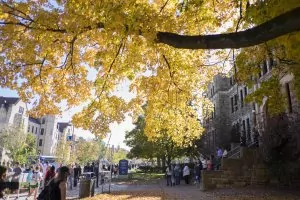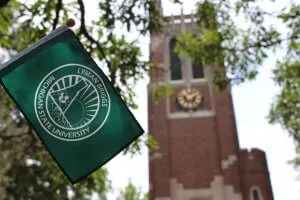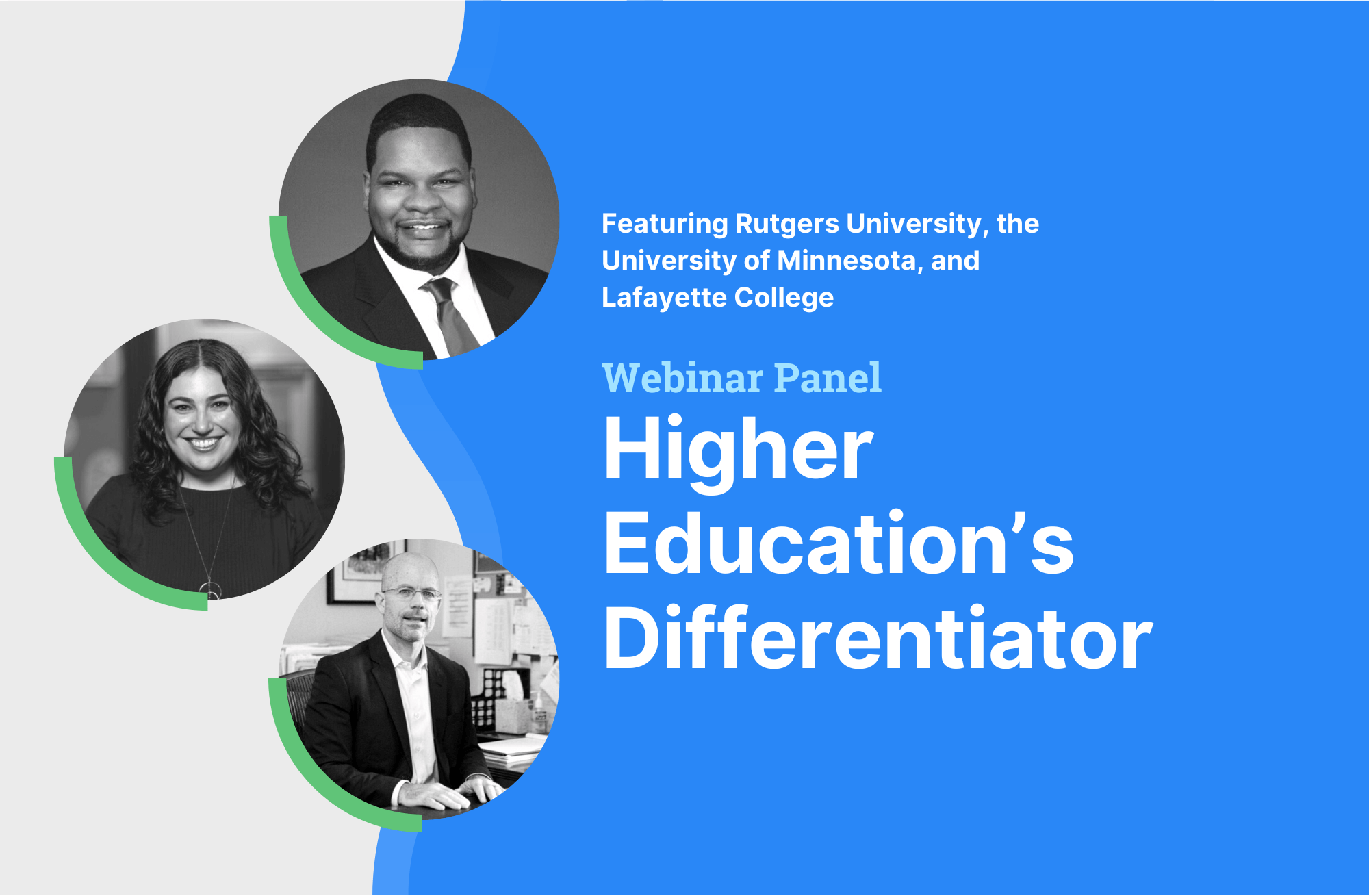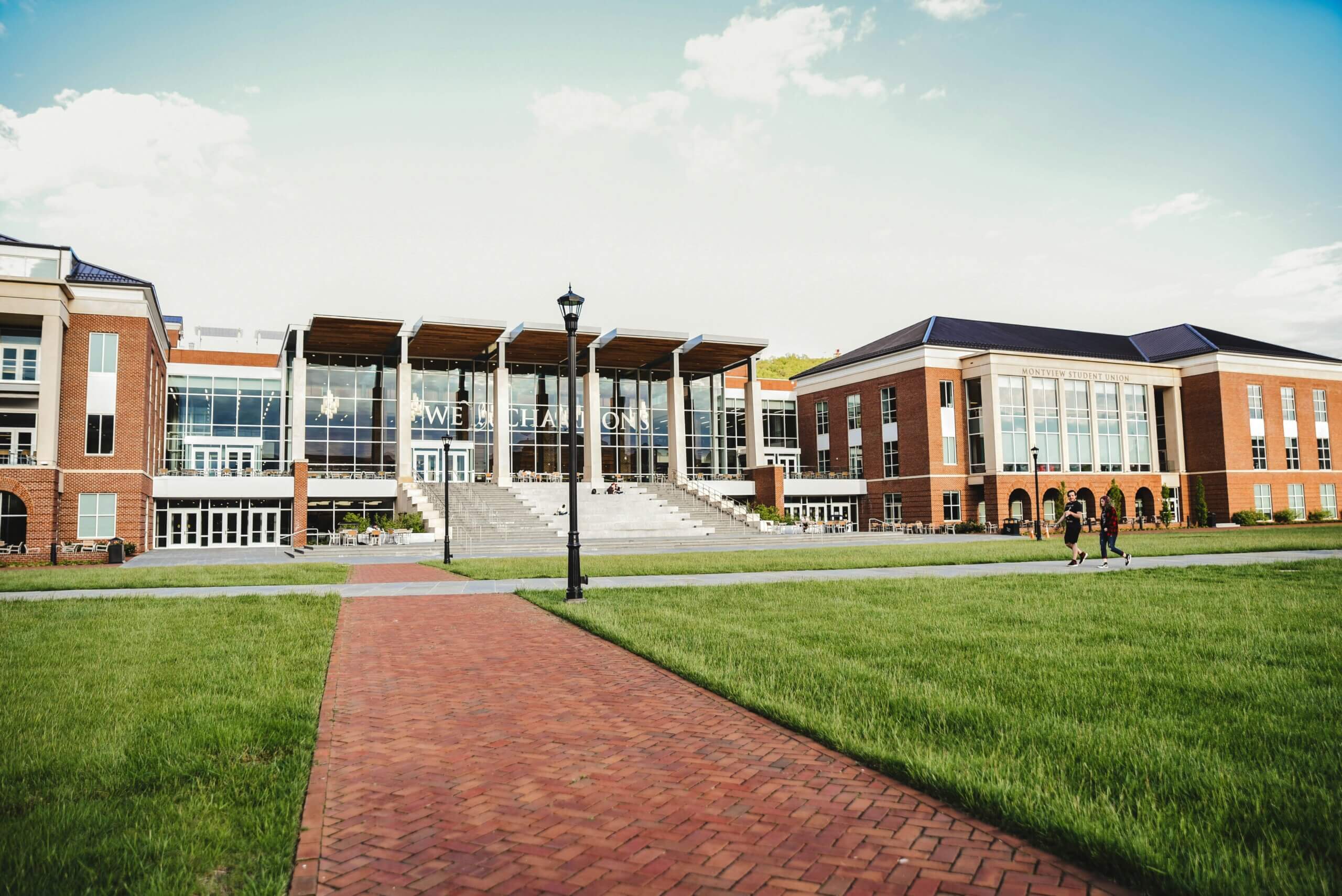College to Career
On-Demand Recording: Higher Ed’s Differentiator
How Three Universities are Forging Ahead with Career Access Today’s learning ecosystem is really crowded. Companies, programs, bootcamps, and more […]
Solutions
Helping higher education create transformational change across campus.
See AllFor Universities
Admissions & Enrollment
Maximize enrollment by increasing yield & reducing melt
Experiential Learning
Scale High-Impact Practices for student success
PathwayU
Redefine how students pick majors & careers with PathwayU
Student Success
Increase retention & persistence to graduation
Career Services
Improve career readiness & career navigation
Industry Partners
Connect universities & corporations for project-based learning
Alumni & Advancement
Grow alumni engagement & the philanthropy pipeline
Success Stories
Read how schools leverage PeopleGrove in their communities.
See All Stories
University of Kansas
How University of Kansas scales career services to their 375,000 alumni

Michigan State University
How Michigan State ensures academic and career success for students

University of Miami
How the Toppel Career Center joined forces with alumni to provide career guidance to students
Resources
Explore blogs, webinars, whitepapers, and more resources to enhance how students and alumni connect.
See All ResourcesBlog
Read posts about how PeopleGrove meets higher education’s ever-changing needs at every turn.
Events
In-person or online, join PeopleGrove for unmatched experiences, conferences, webinars, and more.
Research Library
A collection of stories, events, research, and best practices to transform learners’ experiences.
Super Mentors Book
The ordinary person’s guide to asking extraordinary people for help.
Innovators Community
Learn from thought leaders and practitioners in both higher education and workforce development.
About
PeopleGrove is made for learners by learners. Everyone here makes it possible for students and alumni to succeed.
Learn MoreCareers
Be a part of the next big thing for learners everywhere and start making an impact. Join us today!
Contact
Want to get in touch? Have a question? We’d love to hear from you. Connect with us.
College to Career
How Three Universities are Forging Ahead with Career Access Today’s learning ecosystem is really crowded. Companies, programs, bootcamps, and more […]


How Three Universities are Forging Ahead with Career Access
Today’s learning ecosystem is really crowded. Companies, programs, bootcamps, and more are offering learners alternative routes to what learners really want out of that ecosystem — a good or better job. Add that to rising costs for students and their families and employers beginning to drop the “degree requirement” and you have a perfect storm challenging higher education’s monopoly on workforce development.
We recently spoke with higher education leaders on how Career Access is helping them meet the needs of every student and alumni they serve. Here are our top takeaways:
Many of us in higher education have had the experience of a student or alumni approaching us to suggest that we create a service that we actually already offered. The learner just didn’t know it existed!
While each of our panelists were discussing the evolution of career education and how it’s become so central to the learner experience, the theme of proactivity emerged. It’s no longer enough for the learner to seek out the guidance, we have to ensure that Career Access is front and center at all times in the learner’s experience. Whether that’s meeting with department heads at Lafayette, working with student groups at Rutgers, or personalized alumni communication at Minnesota, our panelists discussed just how crucial it is to reach out to learners and stakeholders to promote the availability of those resources.
Of course, that proactivity is even more critical when it comes to traditionally underserved populations. As Wil Jones or Rutgers University perfectly stated, “Career development is a tool for social justice.”
Learners from traditionally underserved backgrounds face unique challenges. For example, a first-generation student is likely to have half the inherited network of a continuing-generation peer. Due to that, as Mike Summers said, while “talent may be evenly distributed, opportunity is not.” Leveraging principles of Career Access while being proactive in reaching out to learners from those backgrounds gives us the opportunity to ensure that we move towards ensuring equity in those opportunities.
Alumni engagement has always been about continuing an institution’s relationship with graduates by providing them resources and communities that they ask for. And while it’s always been important, Lifelong Career Learning has really taken center stage in that relationship.
“We’ve recognized that Lifelong Career Learning is one of the most important things that alumni seek from our institution as they graduate,” Marissa Smith of the University of Minnesota shared. Even before Covid, Minnesota was investing in scalable solutions that provided career resources to their graduates when they need it. “Career growth is not linear,” Marissa continued, “and we don’t know exactly when that grad is going to need to turn back to their alma mater where they started their career education.” Scalable Lifelong Career Learning options allows Minnesota to engage those alumni with what they seek and continue a meaningful relationship between that individual and the institution.
Each of these institutional leaders spoke of their work as a journey, not a destination. With the rapid changes in the workforce and learning ecosystem, it’s crucial that an institution take the right approach while constantly listening to their stakeholders and learners to understand how they might shift their offerings to meet a new need. However, a Career Access framework gives institutions a foundation from which to meet those ever-changing needs and differentiate their work from new entrants in the market.
Browse more research and insights.

Career Services
For nontraditional students pursuing higher education while balancing work, family, or both, support can be key to student success. University […]
4 min read

Alumni & Advancement
In 2022, PeopleGrove released the first-of-its-kind impact report. Its goal was to understand how student-alumni engagement communities – which PeopleGrove […]
4 min read

Career Services
How Science and Deep Insight are Shaping the Future of Career Services The Promise of Informed Choices Imagine knowing […]
3 min read